Soybean Growth and Development
May 21, 2024
Soybean growth stages begin with the emergence of cotyledons from the soil surface (VE). When the unifoliate leaves unfold, the plant has reached the VC stage. After the first trifoliate leaves are fully expanded, numbers are used to signify each vegetative (V) and reproductive (R) stage of growth. As the plant begins to set flowers, the growth stages become reproductive, and the plant progresses through pod development, seed development, and plant maturity. Vegetative growth stages begin to overlap with reproductive stages at about R1. A new growth stage is established when 50% or more of the plants meet the requirements of the growth stage.
Determining Growth Stages in Soybeans
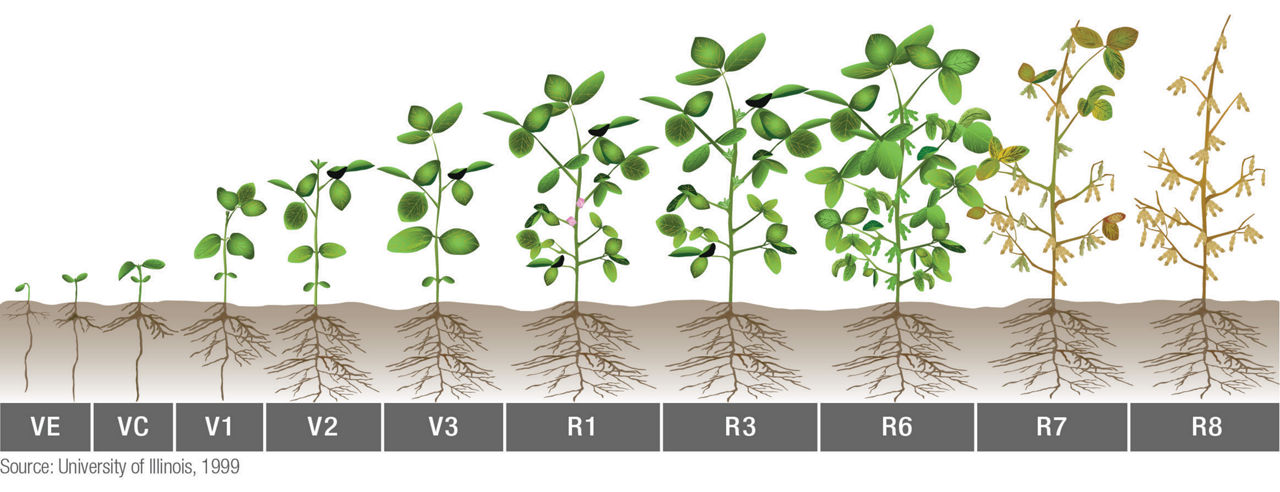
Soybeans are largely either indeterminate or determinate in growth habit. For indeterminate products, vegetative growth continues after flowering, and the rate of development is directly related to temperature. Determinate products generally complete vertical growth by the time flowering is completed.

Emergence (VE) Through First Trifoliate (V1)
After absorbing adequate moisture and depending on temperature, product, and planting depth, the primary root or radical emerges from a soybean seed. The hypocotyl pulls the cotyledons with it to the soil surface (VE, Figure 3). Cotyledons supply the plant’s nutrient needs for seven to 10 days after emergence. The loss of one cotyledon during this time has a limited effect on plant growth; however, if both cotyledons are removed at or soon after emergence, yield potential may be reduced by five to 10%.1,2 Soon after the cotyledons are fully exposed, unifoliate leaves emerge at the second node and begin creating energy through photosynthesis (the VC stage). Development and full extension of the first trifoliate leaflets (node 3) establishes the V1 stage of growth, and with each fully developed trifoliate on the main stem, another V stage is established.
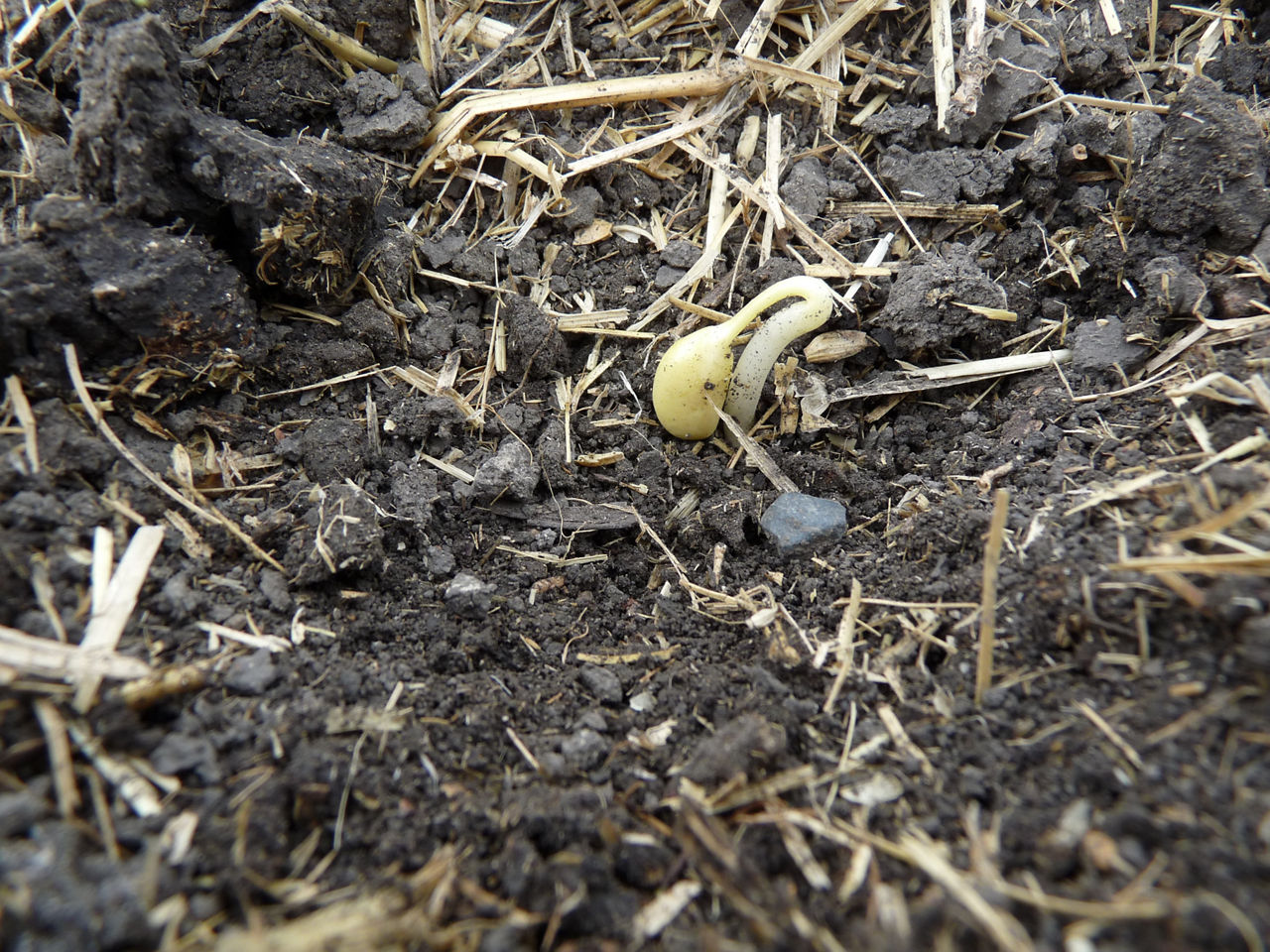
Second Trifoliate (V2)
The V2 stage begins when the second trifoliate leaf is fully expanded. Root nodules begin to develop at this stage, and nitrogen (N) fixation in the nodules begins to occur when plants reach six to eight inches (15 to 20 cm) in height. As plants switch from soil-available N to fixed N, the plants may become yellowish. Lateral roots are developing rapidly in the top six inches (15 cm) of soil.
Third to Fifth Trifoliate (V3 to V5)
Axillary buds develop into flower clusters (racemes) in the top of the stem. Determinate varieties stop producing nodes on the main stem soon after the onset of flowering.3 For indeterminate varieties, the total number of nodes the plant can produce on the main stem is established at V5. Axillary buds that develop on an indeterminate soybean plant can help the plant recover from damage. This is typically the time that iron chlorosis deficiency symptoms become visible in impacted fields.
Sixth Trifoliate (V6)
Plants develop new growth stages about every three days, depending on environmental conditions. At this stage, lateral roots should overlap rows 30-inches wide or less. A 50% loss of leaves at this stage may reduce yield potential by about three percent.2
Beginning Bloom (R1)
Flowering begins on the third to sixth node, continues up and down the main stem, and eventually moves to the branches. Nodes on the main stem usually have at least one flower. Vertical roots as well as secondary roots and root hairs continue to grow rapidly until R4 or R5.
Full Bloom (R2)
An open flower (Figure 4) develops at one of the top two nodes of the main stem. The plant has accumulated about 25% of its total dry weight and nutrients and about 50% of its mature height.2 Nitrogen fixation by root nodules is increasing rapidly. Loss of up to 50% of plant leaves from hail, insects, or disease at this stage may reduce yield potential by six percent.2
Beginning Pod (R3)
A pod on at least one of the upper four nodes is 3/16-inch (5 mm) long or longer. Heat or moisture stress at this stage can reduce pod numbers, seed number per pod, or seed size, which may reduce yield potential. The ability of soybean plants to recover from temporary stress decreases from R1 to R5.5. Favorable growing conditions during this period may result in greater pod number and increased yield potential.
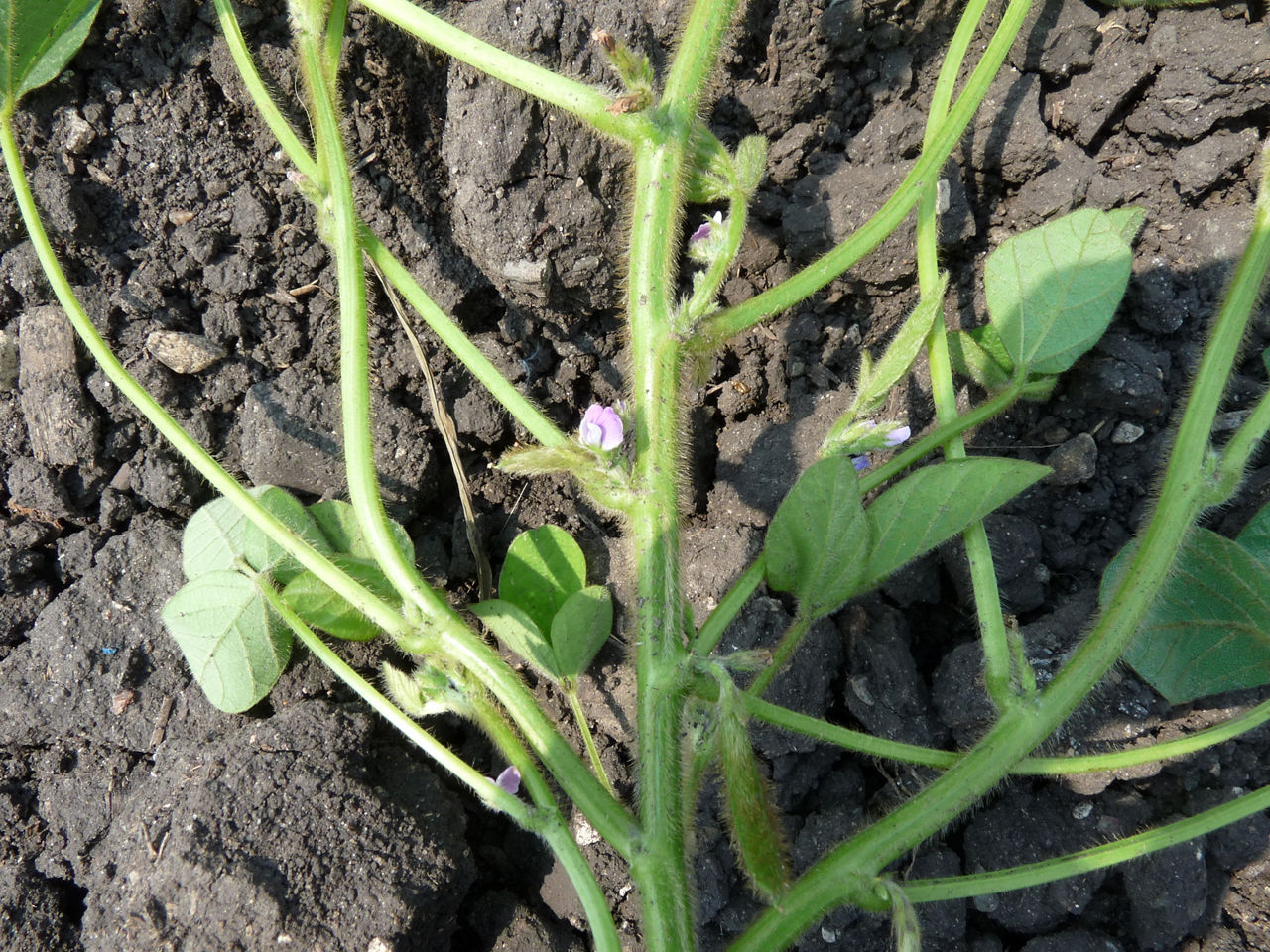
Full Pod (R4)
Pods are growing rapidly, and seeds are developing. At least one ¾-inch (19 mm) long pod has developed on at least one of the four upper-most nodes. Stress during this period (and through R6) can cause more reduction in yield potential than at any other growth stage. Timely rainfall or irrigation may help reduce the potential for yield loss.
Beginning Seed (R5)
At least one seed that is 1/8-inch (3 mm) long is present in a pod (Figure 5) at one of the four upper-most nodes. About half of the nutrients required for seed filling come from the plant’s vegetative parts and about half from N fixation and nutrient uptake by the roots. Nitrogen fixation peaks. Stress at this stage can reduce pod numbers, the number of seeds per pod, seed size, and yield potential. Plants attain maximum height, node number, and leaf area at this stage.
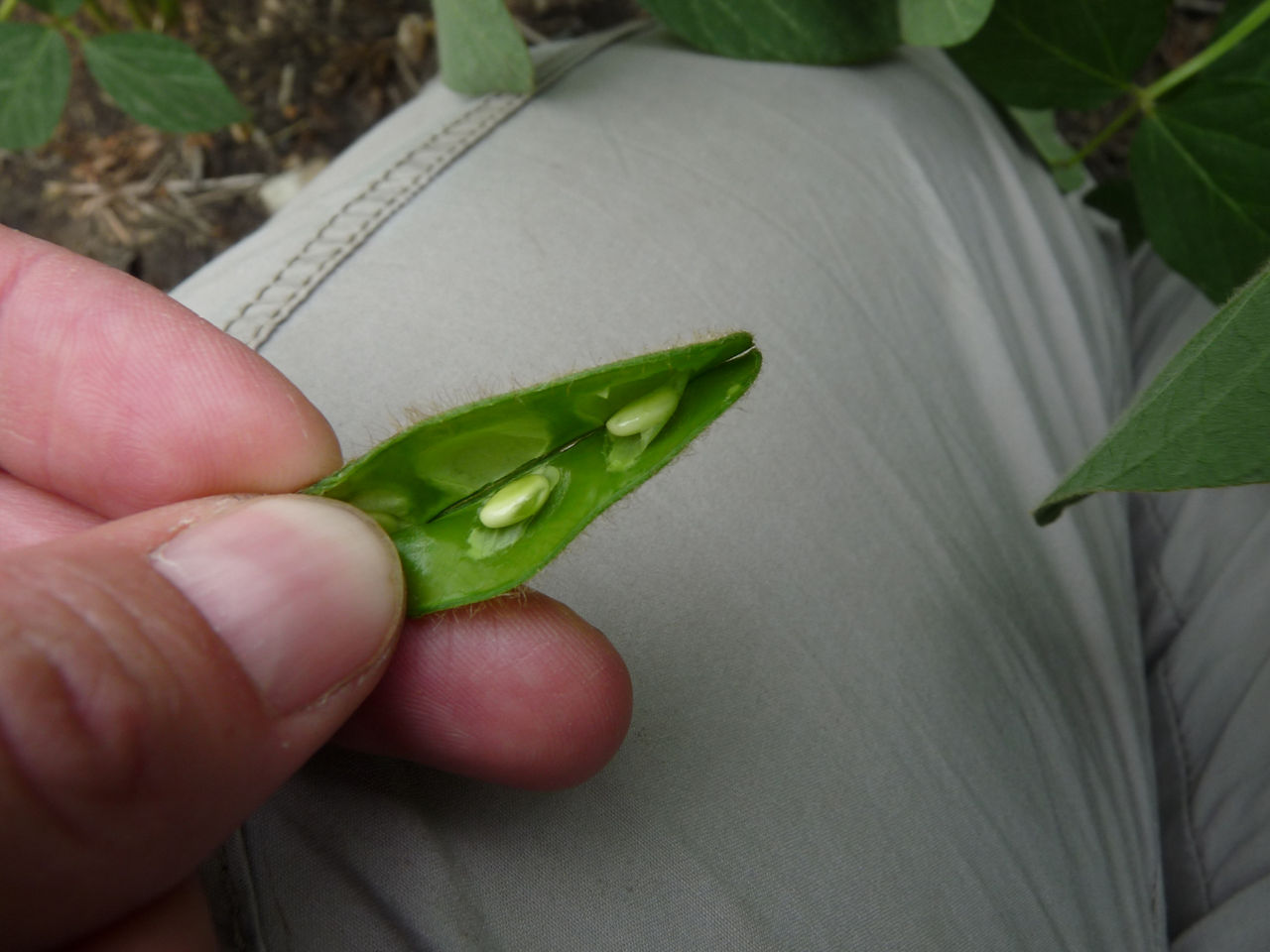
Full Seed (R6)
This “green bean” stage (Figure 6) marks the beginning of the full seed stage. At least one of the four upper nodes should have a pod with a green seed filling the pod cavity. The total pod weight peaks and leaves begin to yellow.
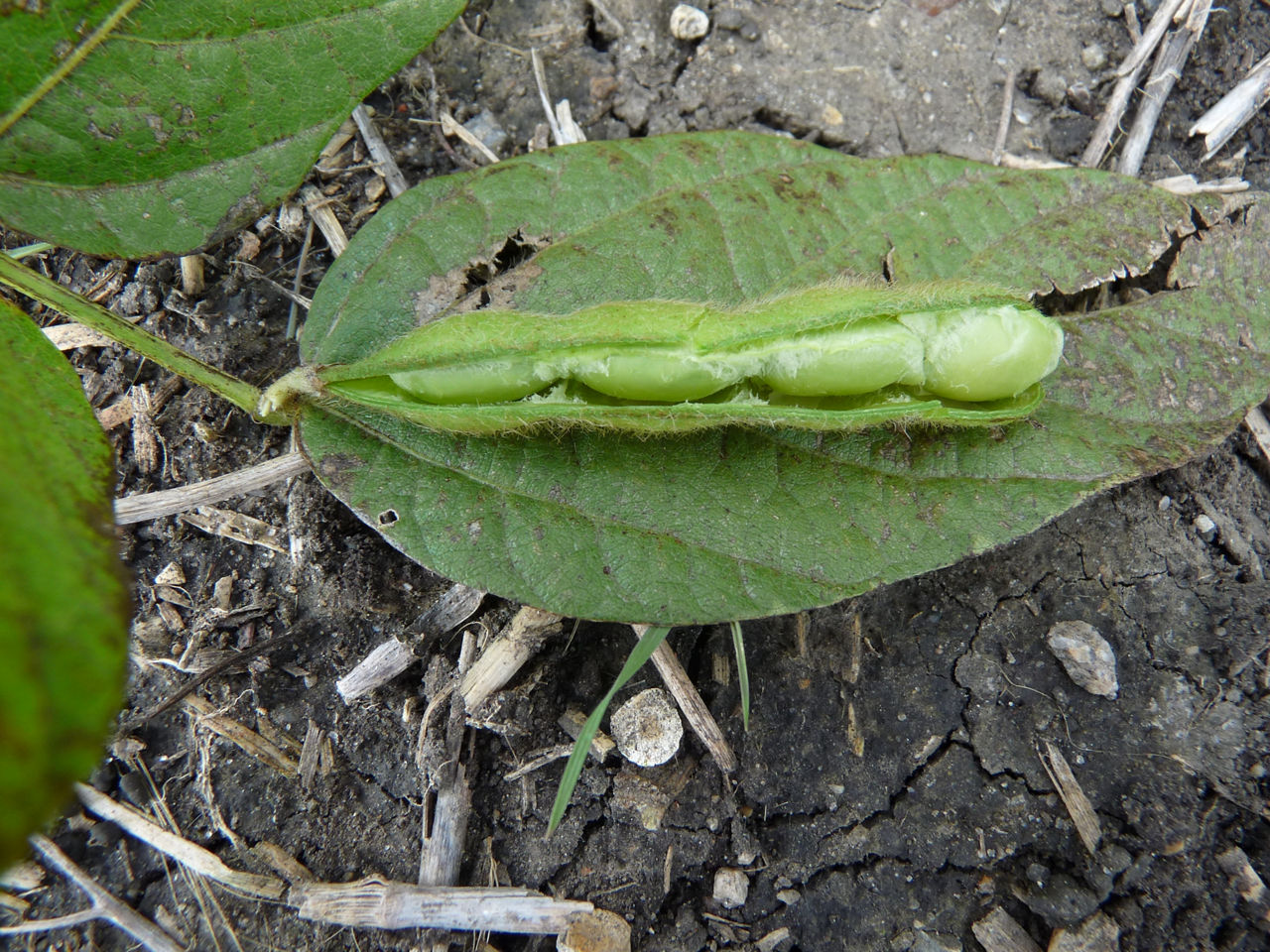
Beginning Maturity (R7)
At least one normal pod on the main stem reaches its brown or tan mature color (Figure 8). Seed dry matter begins to peak. Seeds and pods begin to lose green color. Plants are safe from a killing frost. Yield potential may be reduced if pods are knocked from plants or if pods shatter, releasing seeds.
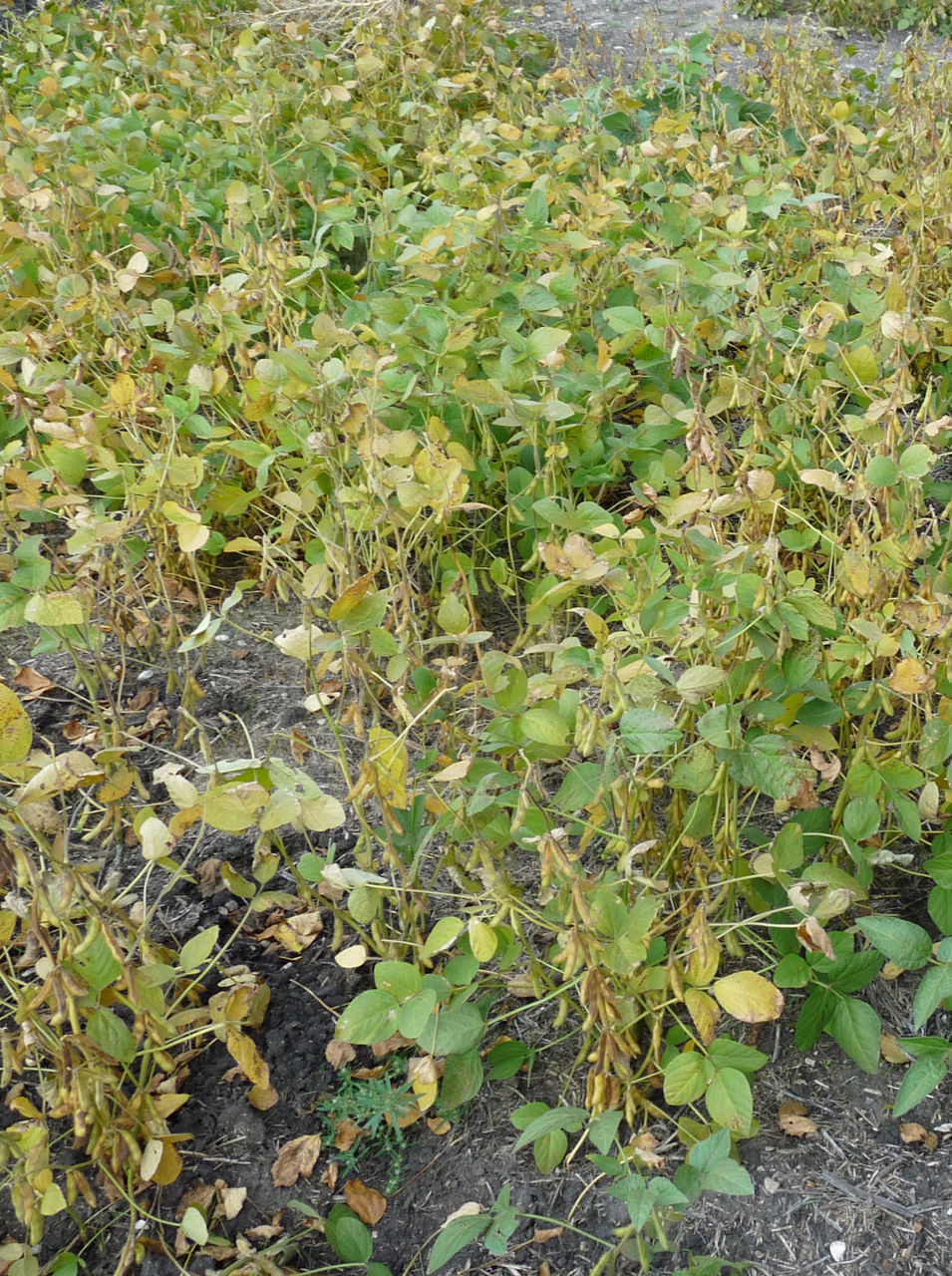
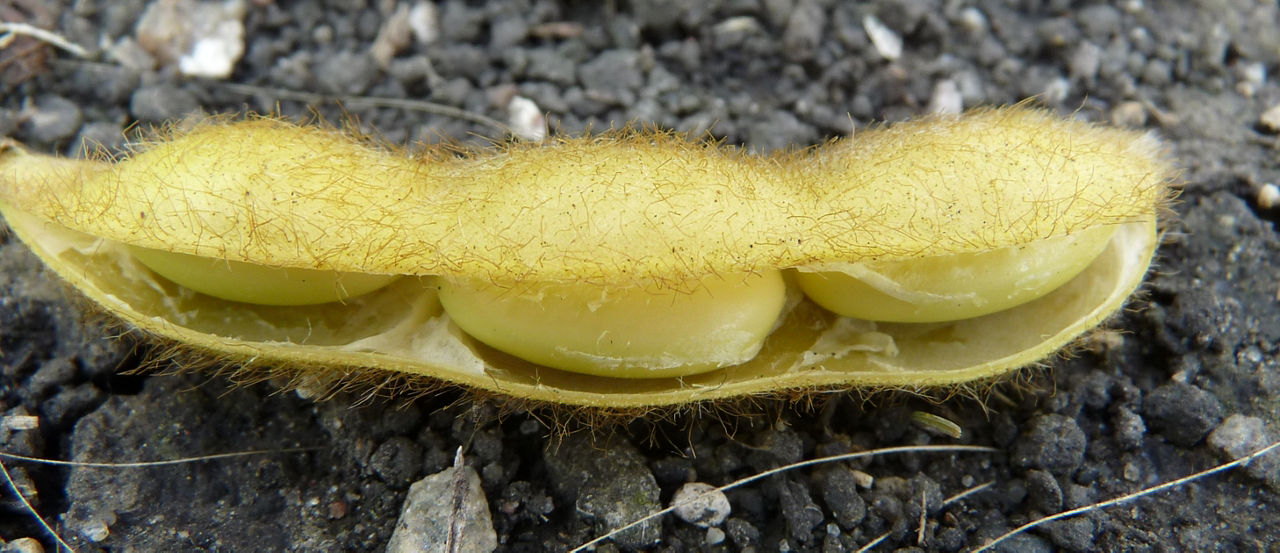
Full Maturity (R8)
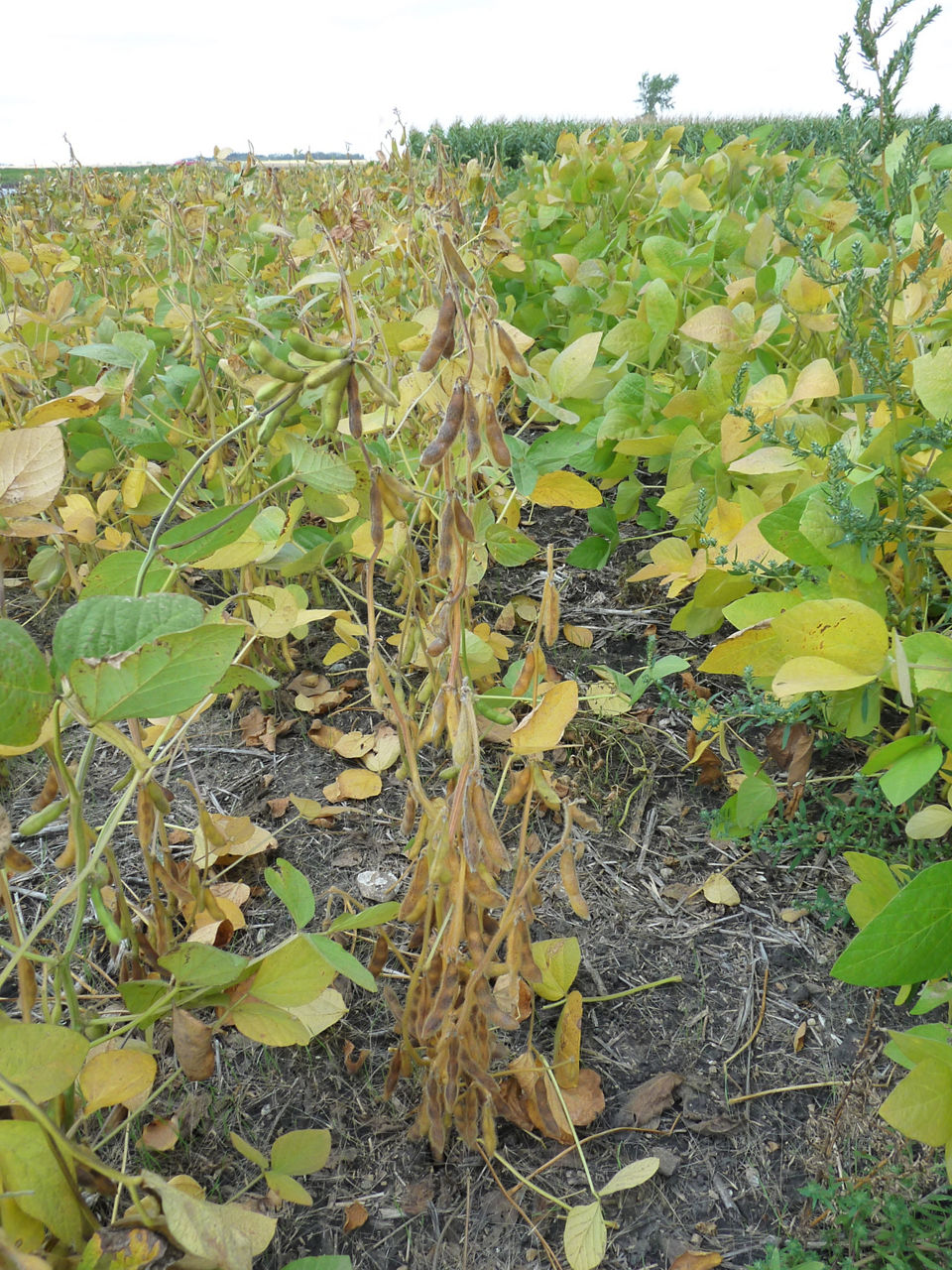
When at least 95% of the pods on a plant have reached their mature color (Figure 9), the plant is fully mature. After the R8 stage has been reached typically five to 10 days of good drying weather are needed to obtain a harvest seed moisture content of less than 15%.
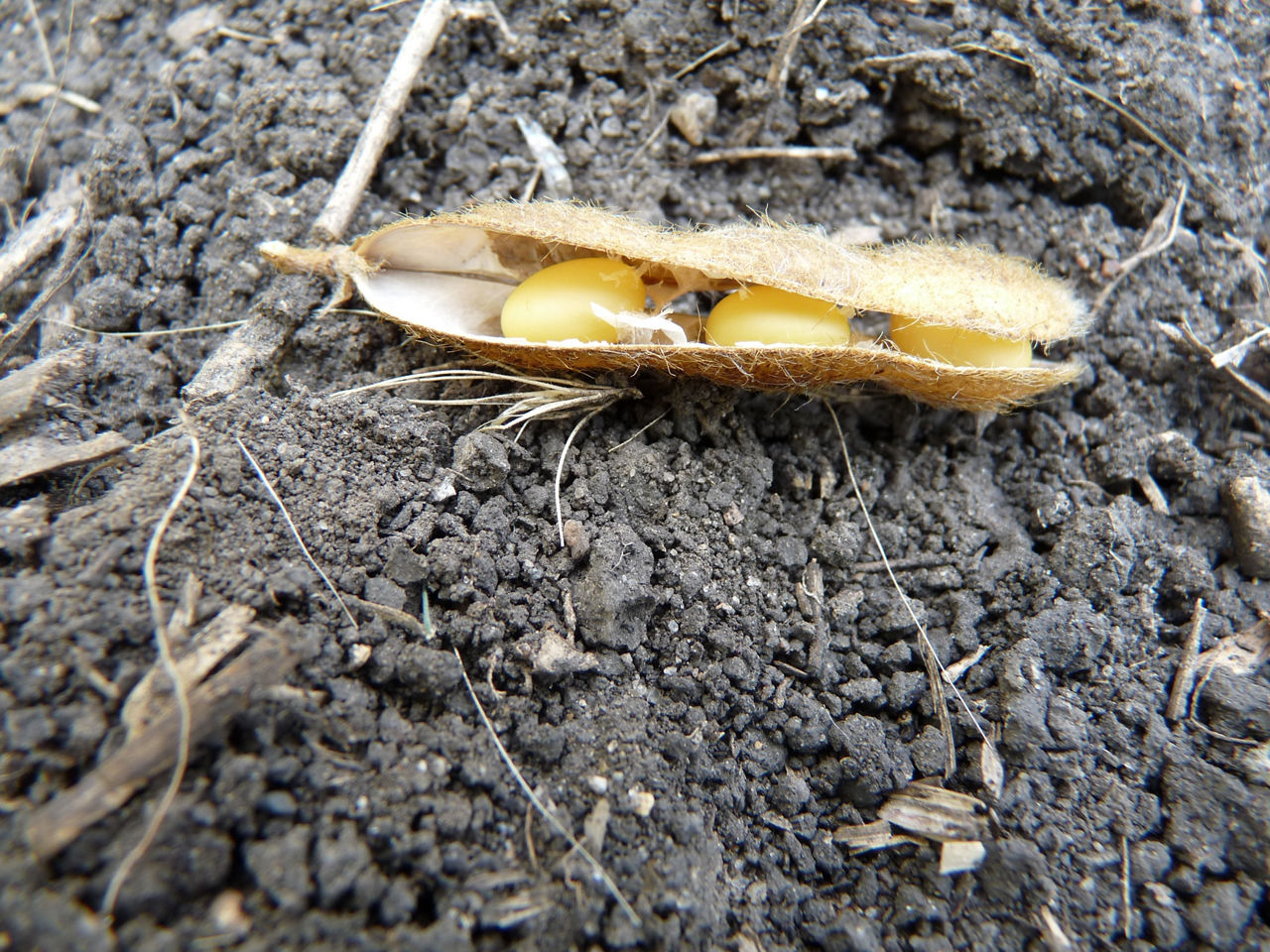
Sources
1 Rees, J., Specht, J., Elmore, R., Nygren, A., and Mueller, N. 2019. Considerations after crusted soybean. University of Nebraska-Lincoln. https://cropwatch.unl.edu/2019/considerations-after-crusted-soybean
2 Conley, S. 2018. A Visual Guide to Soybean Growth Stages. University of Wisconsin-Madison. https://ipcm.wisc.edu/blog/2018/05/a-visual-guide-to-soybean-growth-stages-2/
3 Purcell, L.C., Montserrat, S., and Ashlock, L. 2014. Soybean growth and development. Arkansas Soybean Production Handbook, Chapter 2.
Kandel, H. and Endres, G. 2023. Soybean production field guide for North Dakota. North Dakota State University. A1172. https://www.ndsu.edu/agriculture/ag-hub/publications/soybean-production-field-guide-north-dakota
Web sources verified 5/7/2024. 1314_12400